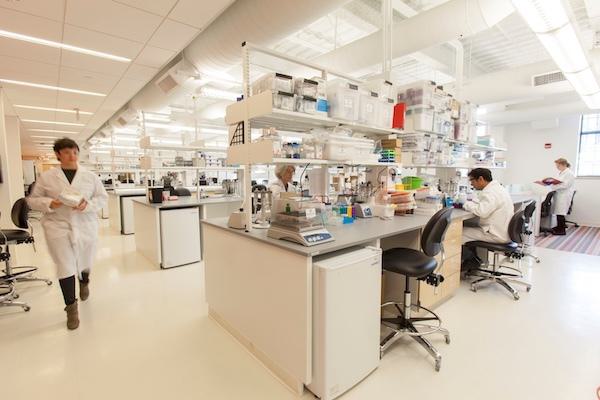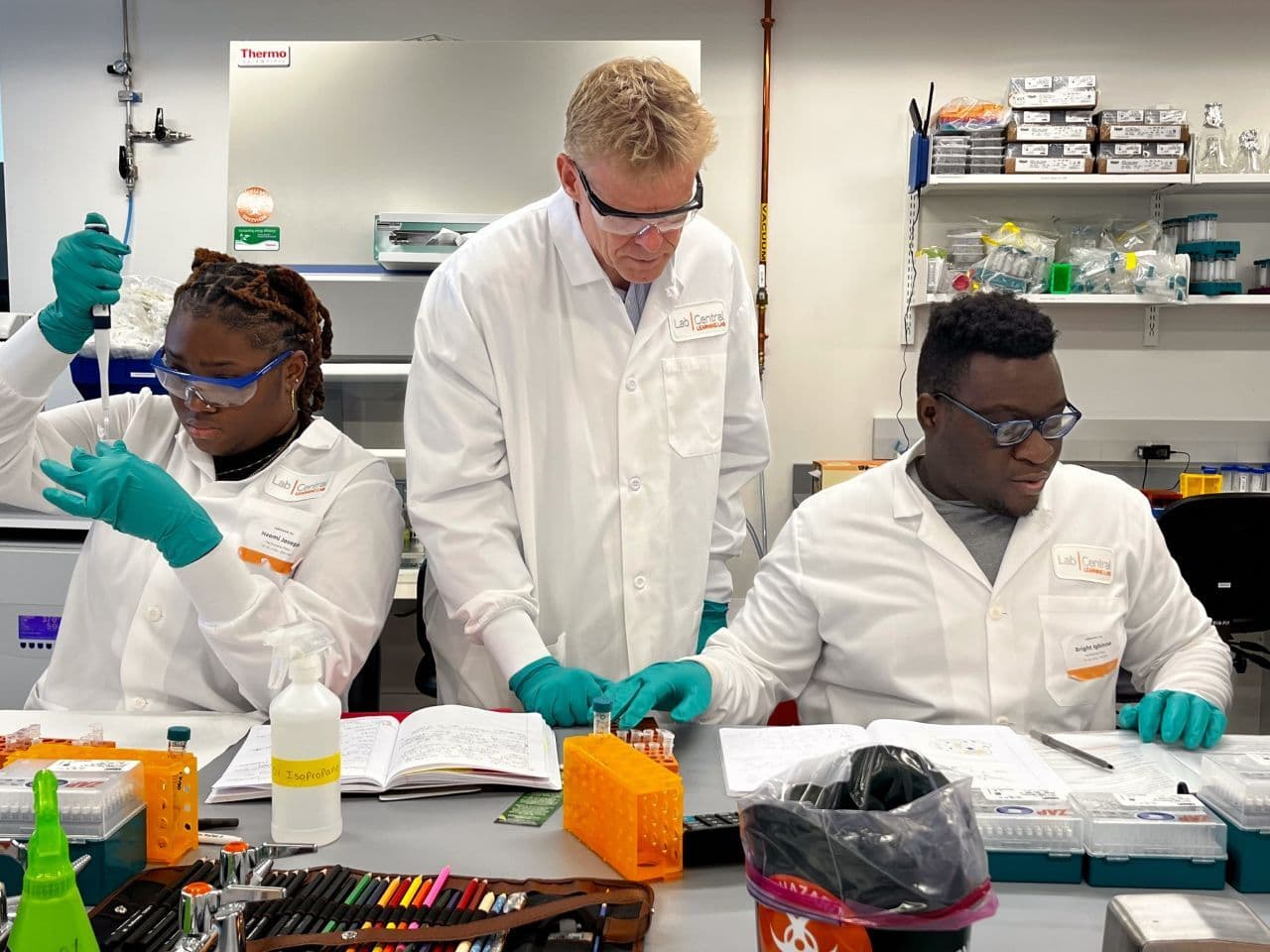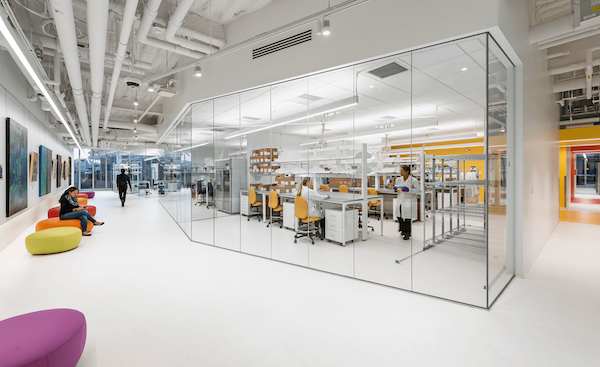#WhereBiotechBegins
Disclaimer: the views, thoughts, and opinions expressed in this blog belong solely to the individual author, and not to LabCentral or the author’s employer, organization, association or any other group.
By: Johannes Fruehauf, MD, PhD, Founder and President, LabCentral
The LabCentral blog – a new hub for biotech industry views and opinions
The U.S. biotech and life-sciences industry has a long and proud history of driving medical innovations that have improved healthcare outcomes across a wide range of diseases and the overall quality of life for people worldwide. For too long, however, the industry’s narrative has been dominated and defined by partisans with a specific agenda who do not always provide the broader public with the context needed to be fully informed on key issues.
We started LabCentral as a non-profit organization with a mission to help create the next generation of biotech companies. We do that by providing entrepreneurs and innovative life-sciences startups with the space and resources they need to test out, challenge and nurture early ideas as well as providing a platform and space for events to educate and inform the community across a variety of perspectives. We view this blog as an extension of these educational events – a digital platform to reach a broader audience and present a variety of information, views and opinions from individuals across the industry. This blog will address topics from the latest scientific breakthroughs and disease-specific advances to how to educate and train the next generation of scientists, leaders, and entrepreneurs in biotech. It may not be a place to find all the answers, but we hope to advance the conversation and won’t be afraid to address tough questions! In that spirit, I’ll start with some personal thoughts on a hot-button topic that touches everyone in some way, and that has a direct impact on our industry: the price of prescription drugs.
The Drug Pricing Debate
Despite the societal benefit of the innovative technologies and therapeutics coming out of biotech, the broader discussion and debate in the news media and across the political spectrum has typically been distilled down to this: the biotech industry is greedy and keeping drug prices high to maximize profits. The biotech and life-sciences industry has countered this with: discovering and nurturing new medical breakthroughs takes significant investment, it takes a long period of time, and is made even harder through limited rates of success so generating profits is important to fund future research. In my view, both arguments hold truth. However, they also miss key details that would provide a full perspective on the issue to better inform everyone – whether they are in their doctor’s office or in the voting booth.
The Public and Politicians: Prescription Drug Prices Are Too High!
The public’s outrage is understandable given some recent high-profile cases and coverage of bad actors that ends up influencing the view of the entire industry: everything from Martin Shkreli and Turin Pharmaceutical’s 5,000% price increase for Daraprim to Mylan’s 400% price increase for EpiPens and even alleged price collusion by generic drug manufacturers.The public is rightly upset to hear about patients who are now forced to take action on their own to circumvent costs, ranging from people with diabetes crossing over into Canada to purchase insulin for a tenth of the price in the U.S. to even rationing their life-saving medicines with dangerous results.
I think everyone would agree – including most of the biotech industry – that these cases of price increases are egregious examples of individuals or companies using their market position in an unacceptable way. In the highly-regulated market that is healthcare, supply and demand don’t always work efficiently to correct price abuses. In the case of Turin, Daraprim was off-patent, but the company controlled the only manufacturing facility and with a limited patient population there was no incentive for a competitor to invest in the long process to create a competitive drug, set up a manufacturing facility and get FDA approval. Or with Mylan, due to the dramatic increase in people suffering from life-threatening allergies and the need for schools, offices and other places to stock EpiPens, it created a shortage that opened the door to unprecedented price increases.
Biotech Industry: Innovation Requires Investment
The primary focus of our industry is this: pushing the boundaries of science to identify and develop new insights and understanding of disease, leading to new drugs, therapies and cures to help patients – whether they are entirely new drugs or dramatic improvements on existing ones. What the broader public may not realize, but are important points of context: To bring a new drug to market today it typically takes more than $1 billion and 10 years of development. The process of developing a drug is highly regulated, governed by the Food & Drug Administration (FDA) and includes multiple phases of review and approval, including clinical trials. On average, for every 100 new drug applications that are submitted to the FDA, less than 10 make it from the first phase of clinical trials to FDA approval. And each of those “failures” required an investment in scientists, lab facilities and technicians, regulatory and compliance teams and more. Even with that very low success rate – and recognizing that not every FDA-approved drug becomes a “blockbuster” – the industry still invests. It is important to recognize that the scientific community learns from failures just as much as it learns from successes and that what we learn during these studies adds important insight to the collective knowledge going forward. To scientists, what does not work may be just as important to know as what does.
It is also important to recognize that the industry’s continued investment in identifying new cures, therapies and drugs is not a given. Earlier this year, LabCentral hosted a “State of Life Science Innovation” event to discuss this topic with multiple panels and speakers representing a range of industry constituents, from biotech venture capitalists, scientists and entrepreneurs to legal experts and current and former state and federal elected officials. Some key takeaways from those discussions were: Biotech investors are not looking for incremental or me-too cures – they are looking for companies that are trying to transform healthcare with disease-modifying therapies or the ability to fundamentally change a standard of care. This is important so the boundaries of science continue to be pushed and explored. Without the benefit of some window of patent exclusivity for generating profits from new discoveries there would most likely be a shift in investment to other markets.
A View Influenced by Experience
While I am now inside the biotech industry as an investor and executive, my views are mostly formed by my education and experience as a doctor working in various healthcare systems. As an example, during my medical training I had the opportunity of working in Zimbabwe, a poor developing country in Southern Africa. There, I saw the impact we had on the lives of remote populations based on a limited number of cost-effective, off-patent medicines we had available to meet a range of medical conditions – from aspirin and malaria drugs to chemotherapy and contraceptives. In developed nations these were viewed as essentially “basics,” but in developing countries they saved lives and helped underscore to me the long term societal benefit of off-patent drugs and therapies. Later, as a physician treating oncology patients, it was often frustrating to me that in many cases we had very little to offer our cancer patients apart from chemotherapies that would often come with severe side effects for only marginal improvements in survival or outcome. Today, through new biotech innovations, many cancer patients have dramatically better therapies, outcomes and quality of life. As outlined in The Biotech Social Contract, a thought-provoking series of posts by Peter Kolchinsky that delves into various aspects of drug pricing, it’s time for more industry transparency, discussion, accountability and recognition that the biotech industry and its innovations are benefiting all of society…and that simply forcing biotech companies to reduce prices may not have the impact politicians – and patients – want.
Are some drug prices too high? Yes, in some cases they are, and we need to have a clear analysis to avoid price gouging and abuses of the system. But the way to deal with that is not to curtail patent protections that were put in place to incentivize innovation as some politicians in Washington are now proposing. And if we demonize the innovative biotech industry and restrict the ability for investors and companies to generate profits during an initial window under patent protection, then we can expect investment to move to other industries. This will slow medical innovation to a halt and we will find ourselves at a point where new and potentially life-saving drugs can no longer be developed.
Lastly, it is important to highlight that drug prices are not solely driven by the biotech industry. We’ll dig into this in a future post, but we have not touched on the inefficiencies and additional costs created by our healthcare market that includes insurance companies, pharmacy benefit managers, policy makers and others, many of which benefit from high drug costs. As the administration and 2020 candidates all gear up for an election season with proposals on how to reduce drug prices, and often with proposals that do not differentiate between costs for innovative drugs and overall drug costs, it is important that we contribute to an honest and level-headed discussion.
I invite you to subscribe to the blog to follow the industry discussion as we invite more experts and industry sources – investors, entrepreneurs, scientists, policy makers and more – to provide their views and the facts to back them up. We may not always agree with each other, but our industry will be more transparent, and our community better informed, by the debate and discussion.
I welcome your thoughts and comments, as well as suggestions for future topics to address in the blog.











